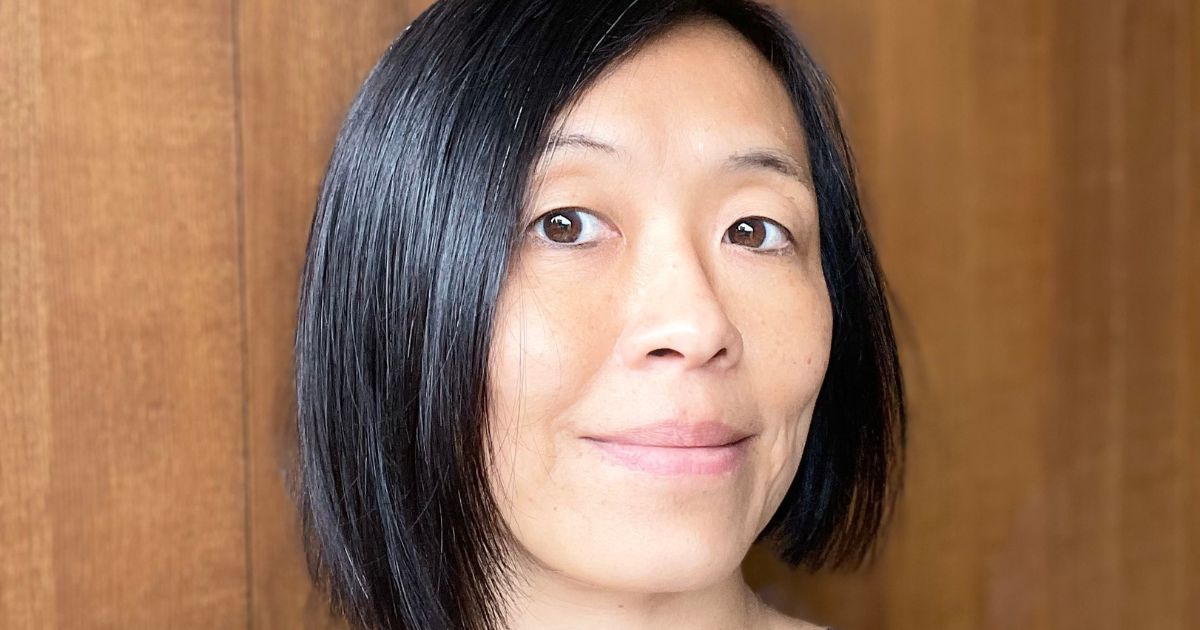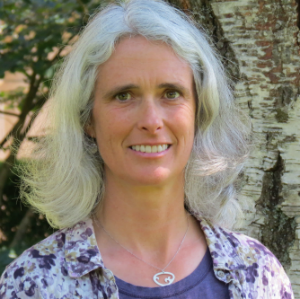For the past two years, Toxic-Free Future has had the good fortune to partner with Gladys Ly-Au Young, principal at SKL Architects, as we seek to expand the use of healthier building materials. Along with being an accomplished architect, Gladys is a passionate and inspiring advocate who brings people together to move toward a common goal.
We interviewed Gladys so others could also get to know her and learn about the incredible work she is doing to bring safer materials to affordable housing.
Q: How did you get started working on affordable housing and healthy materials?
A: When I was a master’s degree student in sustainable design, I researched the life cycle of building materials—focusing on measuring the carbon footprint. I quickly realized that it was also important to address the toxics in the materials. I saw that toxics are an important part of addressing equity.
Early in my 30-year career as an architect, I started to steer my path towards the connection between architecture, climate change, and social justice – so that I would be reaching people who are underserved.
I saw that architecture doesn’t serve everyone equally. People need housing, schools, and buildings for supportive services. These are elements of supporting equity. For me, working as an architect in affordable housing is a perfect fit for my goal of supporting those who are often underserved.
I started working on affordable housing about 10 years ago, after I got my master’s degree. I started a new firm [SKL Architects] with partners. Our first projects were schools and a mixed-use project. From there we moved on to the affordable housing sector.
Q: What drives your interest in healthy building materials?
A: The people who are underserved are the most impacted from toxic materials. They get exposed from the materials in the built environment and from the community they live in, and they get toxic exposures from the job. The data show the health impact that is passed on from generation to generation.
PVC is the material that first piqued my interest. Its use is so prevalent in our building sector, and the vinyl industry is powerful. There is a lot of misinformation about plastic in our built environment being recycled, but a lot of it is really not recycled. The building industry is the second largest user of plastic after packaging. Since then I learned about other chemicals like PFAS, chromium, and others we should be aware of.
In the last few years, a lot more people are cognizant of the toxicity of materials – there has been a shift.
Q: What do you think are the biggest problems in housing today?
A: A lot of the problem is there is a chronic shortage of housing. Period. That causes a chronic shortage in affordable housing. Sometimes the urgency of things perpetuates business as usual—expediency, the cheapest option. That doesn’t help with the problem of health equity because you are just doing the same thing over and over again, playing into the transactional economy mindset. But if we take a minute and think about the problem, we all have the power to shift and build an ecosystem of care. We can do it.
If we ask manufacturers why the healthy material costs more than the toxic material, it doesn’t make sense to them either. It doesn’t make sense to charge people less for a toxic material because the downstream costs of health impacts and environmental cleanup are huge.
Q: What are the biggest opportunities right now?
A: There is momentum because of good work being done by Toxic-Free Future, Habitable, and others making tools and working on the policy side. The architects and building industry need to work with people who have expertise in healthier building materials and carry this momentum forward to have it integrated with decision making.
We need to understand the reasons why we are building in a different way and quantify it so we can justify it. If there were funding to help equalize the cost, then we wouldn’t have to pick between toxic and non-toxic materials. Can’t we just have materials that are good for everyone?
There is also an opportunity for more transparency. All of us need to ask the question, what is in the materials around us? Why are you not disclosing the content?
Q: Who are the most innovative leaders in this area?
A: Toxic-Free Future on the policy front is doing the hard work to get people to understand the importance. That is a heavy lift. Habitable, Mindful Materials, and the International Living Future Institute (ILFI) are also leaders. ILFI has a new program helping affordable housing to get access to healthier materials. They are creating a resource focused on identifying healthier materials, the cost, and why—which is legwork that is very difficult for every project to do individually. This resource will be available for people to use for free. It’s about building access and capacity.
King County’s Housing Development Consortium has added healthy materials to its Exemplary Buildings Program, and that’s a big step forward. It’s important because they have added it to their work on energy efficiency. Yes, we need affordable housing. Yes, we need it to be energy efficient. Yes, we need it to be toxic-free.
Q: What is the most exciting project that you have been involved in?
A: I am working on affordable housing projects using the home ownership model. That model is a tool for the families to build wealth and grow in place. I’m especially excited about the community-driven developments like the one that is breaking ground May 18 (in White Center, Washington), called White Center HUB—Hope Unity Belonging. This project brings together health clinics with housing because health services and affordable housing need to go hand in hand to support a whole person.
Q: What is the greatest need today?
A: I have tried to find funding all the way from the federal level to the state and local level for non-toxic materials. There is no funding that is specifically for affordable housing. There is something wrong when there is nothing available, and the need is so high. It would be great if we could create funding to help us close the gap until we have cost parity for these materials.
Q: What is your vision for the future?
A: System change. We need a system change to a world that puts care at the center of our focus. If that is everybody’s vision—care and equity for all—I’m sure we can figure out a different way to do things. The transactional economy is based on systems where the people who are most impacted were not invited to be at the table to make decisions. Moving forward, we need a transformational economy that will center a different set of goals.





